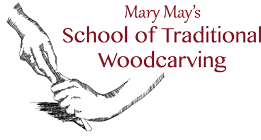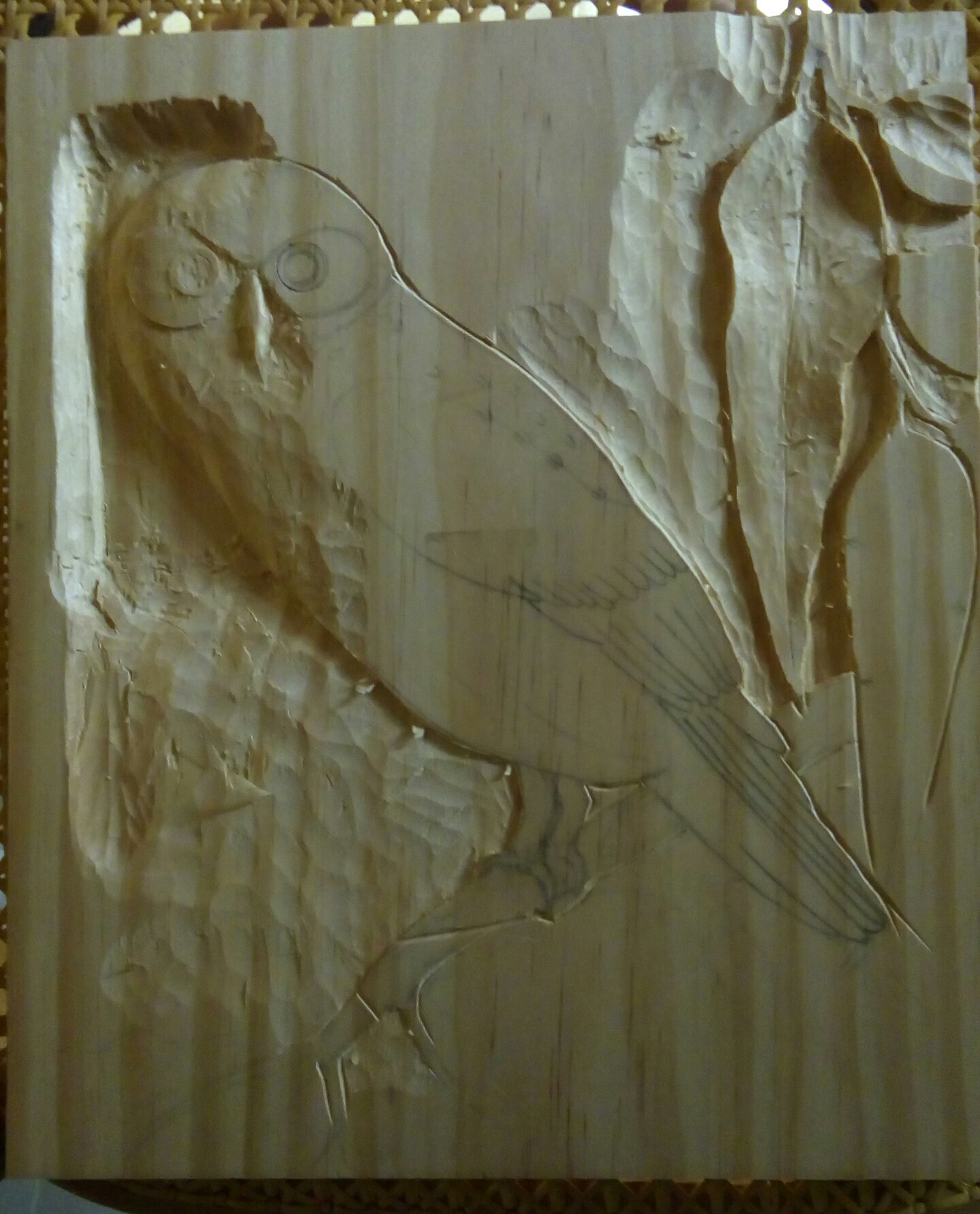Owl amongst Eucalypt leaves
Quote from Robert on August 13, 2019, 1:00 amHi,
This is my current project, pictured in its early stages, about 10 weeks ago.
I am hoping to finish it in a few weeks time. The timber is radiata pine.
The subject is the Southern Boobook Owl, named after its call, and is the smallest owl found in Australia.
Robert
Hi,
This is my current project, pictured in its early stages, about 10 weeks ago.
I am hoping to finish it in a few weeks time. The timber is radiata pine.
The subject is the Southern Boobook Owl, named after its call, and is the smallest owl found in Australia.
Robert
Uploaded files:Quote from Russell Wagner on August 18, 2019, 3:26 pmwhat great ideas i see here. wonderful work
what great ideas i see here. wonderful work
Quote from MaryMay on August 21, 2019, 8:27 pmRobert,
Looking good! I am not familiar with that wood. It looks like it is cooperating quite well! Or give credit to the carving talent 🙂
Robert,
Looking good! I am not familiar with that wood. It looks like it is cooperating quite well! Or give credit to the carving talent 🙂
Quote from Robert on August 22, 2019, 12:22 amThanks for the encouragement, guys.
The name Radiata Pine comes from the botanical name Pinus radiata. The other common name is Monterey Pine, which is probably familiar to you, as it is native to a limited area of the west coast of North America. It is a fast growing, very soft wood which is grown in plantations for the construction industry. The grain is usually straight, except for the central core ,which tends to be spiral, resulting in twisting during drying unless adequately weighed down.
Thanks for the encouragement, guys.
The name Radiata Pine comes from the botanical name Pinus radiata. The other common name is Monterey Pine, which is probably familiar to you, as it is native to a limited area of the west coast of North America. It is a fast growing, very soft wood which is grown in plantations for the construction industry. The grain is usually straight, except for the central core ,which tends to be spiral, resulting in twisting during drying unless adequately weighed down.
Quote from Robert on February 16, 2020, 1:17 amWell I finally had the opportunity to finish this carving. I spent more time on it than expected, but it was really enjoyable work, so the time is not important. As a tool salesman once asked me : ¨what do you think about when you are carving?..........nothing! ¨
In all the years I have been a woodworker, it has rarely been the aim to produce a textured finish, so trying to reproduce feathers was a challenge. The soft, fluffy belly was particularly difficult, so I am not sure if my attempt was successful.
My deliberate asymmetric edge is a departure from the standard frame, but might not appeal to everyone.
Well I finally had the opportunity to finish this carving. I spent more time on it than expected, but it was really enjoyable work, so the time is not important. As a tool salesman once asked me : ¨what do you think about when you are carving?..........nothing! ¨
In all the years I have been a woodworker, it has rarely been the aim to produce a textured finish, so trying to reproduce feathers was a challenge. The soft, fluffy belly was particularly difficult, so I am not sure if my attempt was successful.
My deliberate asymmetric edge is a departure from the standard frame, but might not appeal to everyone.
Uploaded files:Quote from Charles Hubbard on February 19, 2020, 8:50 amWow, that really turned out spectacularly! I have to say, I am most taken by the undulations in the larger leaves on the right. That's a detail I wouldn't have thought of, and wouldn't have been able to execute, and it came out great! I am also impressed by the layering with the owl's tail in front of the leaves and the leaves in front of the branch. Will you put a finish on it? Is it intended to hang on the wall, sit on a shelf or incorporated into something bigger?
Well done!
Wow, that really turned out spectacularly! I have to say, I am most taken by the undulations in the larger leaves on the right. That's a detail I wouldn't have thought of, and wouldn't have been able to execute, and it came out great! I am also impressed by the layering with the owl's tail in front of the leaves and the leaves in front of the branch. Will you put a finish on it? Is it intended to hang on the wall, sit on a shelf or incorporated into something bigger?
Well done!
Quote from Robert on February 20, 2020, 8:01 pmCharles - your enthusiastic feedback is appreciated thanks. The undulating leaves are copied from a Eucalyptus citriodora in my yard. The technique is similar to carving a spoon - work the gouge downhill to the lowest point, from both directions. If the surface tears out, try a slicing or diagonal cut. I won't put a finish on it, as the natural color matches our pine-lined ceilings. It is hanging on a wall in our home office.
Charles - your enthusiastic feedback is appreciated thanks. The undulating leaves are copied from a Eucalyptus citriodora in my yard. The technique is similar to carving a spoon - work the gouge downhill to the lowest point, from both directions. If the surface tears out, try a slicing or diagonal cut. I won't put a finish on it, as the natural color matches our pine-lined ceilings. It is hanging on a wall in our home office.
Quote from MaryMay on February 26, 2020, 10:40 pmRobert, that turned out amazing! The flow of the leaves, with some pretty delicate undercuts make them truly come alive! And you successfully shaped the owl to give the appearance of a lot more depth. Keep up the good work and I look forward to seeing more of your work!
Robert, that turned out amazing! The flow of the leaves, with some pretty delicate undercuts make them truly come alive! And you successfully shaped the owl to give the appearance of a lot more depth. Keep up the good work and I look forward to seeing more of your work!
Quote from Russell Wagner on February 26, 2021, 6:31 pmLove the way the leaves flow and the shape, really sets off the owl.
Love the way the leaves flow and the shape, really sets off the owl.

